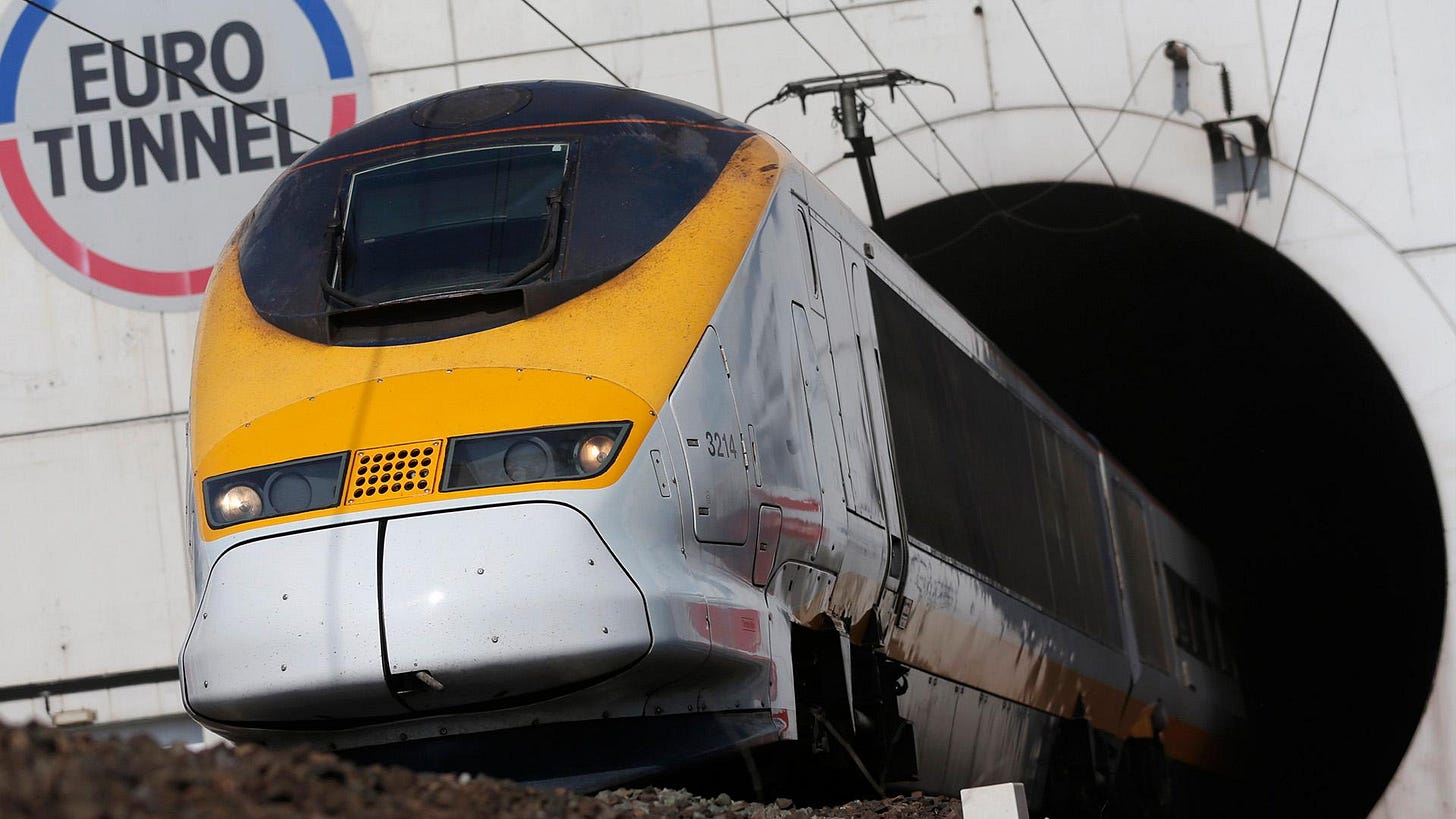On This Day in 1994: How the Channel Tunnel Redrew Britain’s Place in Europe
The engineering triumph that broke through more than rock and shattered centuries of isolation.
On 14 November 1994, something quietly momentous happened beneath the seabed of the English Channel. A train rolled from Waterloo Station in London and emerged in Paris, carrying paying passengers beneath the sea. It was the culmination of an idea centuries in the making, a feat of engineering audacity, and perhaps most symbolically, the first time since the Ice Age that humans could walk or ride from Britain to mainland Europe.
That train did not simply travel through a tunnel. It moved through history, punching a literal hole in the island mindset that had long defined Britain’s self-image.
Sealed Off No More
The Channel Tunnel, often referred to as the “Chunnel,” might be viewed today as infrastructure, a marvel of modern transport, yes, but still just a way to get from A to B faster. That would be to ignore what it really meant in 1994.
Britain had always prided itself on being an island. The moat of the Channel was not just water, it was psychological and political distance, reinforced by centuries of rivalry, war and wartime triumph. The failure of Napoleon and Hitler to cross it had been folded into the national narrative like folklore. The Channel protected, but it also separated.
So when that first train emerged on the other side, what began as a technical breakthrough was also a symbolic one. The tunnel marked Britain’s literal reconnection with the continent. Not by conquest or retreat, but by cooperation.
Born of Risk, Delivered Through Resolve
The story of the Channel Tunnel is not one of smooth progress. It is a chronicle of complications, setbacks and tragedy. When the project officially began in 1986, its backers knew it was going to test the limits of engineering and endurance. Tunnelling 31 miles under one of the busiest shipping lanes in the world, through varying geology, with two separate teams working from opposite directions, was unprecedented.
Even satellite guidance could not be used under that much water. Instead, engineers relied on lasers, mathematics and nerve. And even then, there were failures. Within weeks of digging, water seeped in where it should not have. At one stage, progress was halted until it could be confirmed the flooding was not saltwater from the Channel above. It turned out to be ancient rainwater, a reminder that nature was still writing its own part of the story.
The construction demanded machines no one had built before. So they were commissioned from Japan, 11 colossal boring machines capable of digging, clearing and removing rock all in one continuous operation. They chewed through chalk marl and limestone, each side racing not just toward each other, but against time, cost and the weight of expectations.
Despite incentives for progress, safety incidents piled up. Ten workers lost their lives. Among them was a 19-year-old who tried to catch up with his crew on foot and was killed between oncoming trains. The tunnel cost more than money. But it also earned something priceless, connection.
A Moment of Contact
The emotional pivot of the tunnel’s tale came not in steel or numbers, but in a simple handshake. On 1 December 1990, deep beneath the seabed, British engineer Graham chipped away at the final rock face. On the other side, French engineers were doing the same. When the last slab fell, the two sides met, just inches apart, an astonishing demonstration of human precision.
What followed was a moment of theatre and truth, a French engineer squeezed through the gap, extending a hand. Journalists captured the handshake, but the moment went deeper than symbolism. It was humanity making contact where only nature had ruled for millennia.
Celebrations came with cultural differences too. The British brought sandwiches. The French, naturally, arrived with hot food and champagne. But in that space below the sea, ceremony took a backseat to the real victory, a direct link between two nations who had spent more time as rivals than partners.
Real Legacy of a Tunnel Built to Last
When the first passenger train finally departed Waterloo on that damp November morning in 1994, it carried more than customers. It carried the weight of a history that could now be crossed in under three hours.
The driver, Lionel Stevenson, had done the route before in test runs. But this time it counted. This time, people had paid. There was ceremony, a brass band, champagne, press questions. But perhaps the most telling moment was when he and his co-driver left their regulation hats behind in a locker. The schedule mattered more than appearance. A new era had no time for old costumes.
In the decades since, the Channel Tunnel has become a corridor of commerce, diplomacy, tourism and cultural exchange. Millions use it each year. London to Paris. Paris to Brussels. Amsterdam to London. All connected by a path once thought impossible.
The tunnel reshaped logistics, trade and travel, but it also challenged something deeper. It cracked open the idea that Britain had to remain isolated to be itself. For all the later political shifts, Brexit, border debates and the endless push-pull with Europe, the tunnel remains. It stands as a reminder that geography does not lie, but it also does not dictate destiny.
Conclusion, More Than Concrete
On this day in 1994, when the first passenger train travelled through the Channel Tunnel, it marked more than a completed engineering project. It was a statement, quiet, steady, unstoppable, that Britain could not only coexist with Europe, but be physically part of it.
The tunnel did not erase history, nor did it decide the future. But it gave shape to a possibility, that connection, no matter how difficult or delayed, is still worth digging for.


